When I began my Facebook page The Piano Files with Mark Ainley ten years ago, I had no idea that it would grow to the extent that it has – that wasn’t the intention. It all started rather innocuously: a friend commented on a post on my personal page asking whether I would list some recommended recordings for people like him who didn’t know much about classical music. I had joined some groups on Facebook, then in its early years, so I decided to create a piano group myself. The name The Piano Files was one I had come up with a few years earlier when proposing a piano-themed radio program to the CBC (unsuccessfully in one way, not in another: a producer called from head office in Toronto to tell me that mine was the best proposal they’d received in many years but that it was too ‘specialized’ for their perceived audience). This simple play on the word ‘pianophiles‘ was one that stuck with me that I decided to keep ‘on file’ for later use, and this online forum seemed to be a suitable opportunity.
I started the Piano Files group and soon after noticed that there was a ‘fan page’ format that Facebook offered which seemed to be easier to manage. I tried to delete the group so that I could simply run the Piano Files ‘page’ instead, but Facebook wouldn’t allow me delete the old group. In order to get people to join the correct forum when searching for ‘the piano files,’ because both would show up, I made the title of the page a bit different by adding my name – and thus The Piano Files with Mark Ainley was born. It was a few months before I could finally delete the original group, and then at this point Facebook wouldn’t allow me to change the name of the page! And so my own name stayed attached to it.
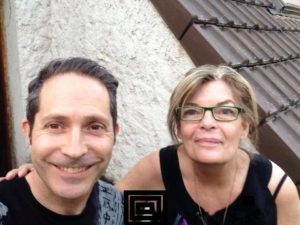
Back before Facebook started limited posts with algorithms, everyone who had joined the page received each post, and while that changed over the years, membership grew and engagement has stayed high and in fact has increased. At a time when the term ‘social media’ was not yet being used and the platform consisted primarily of silly cat videos, the page was a hub for lovers of fine piano playing, and fortunately that has been a constant these ten years as Facebook has grown into a medium that seems indispensable in modern life.
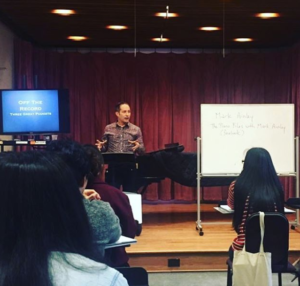
I still remember when we hit 500 as it seemed like such a milestone (and I suppose it was) … and just recently we crossed the 9000 barrier, which was a remarkable threshold to cross. But it’s never been about the numbers but rather having a community of piano fans who appreciate the historic recordings that have been my musical focus since my teens.
And what a community it is: while I have been active and well-connected in the classical music scene for some time before Facebook, through this page I’ve had the opportunity to connect with the descendants of great pianists I had not previously been in contact with, among them the children of Witold Malcuzynski, Rudolf Firkusny, Jakob Gimpel, Rosa Sabater, Ozan Marsh, and Franz Josef Hirt, as well as Artur Schnabel’s granddaughter. I have also had a chance to correspond with and meet pupils of Jorge Bolet, Sidney Foster, Rudolf Firkusny, Marian Filar, Mieczysław Munz, Bruce Hungerford, and others, and managers and assistants to Youri Egorov and André Tchaikowsky. It was through this page that I met Zsolt Bognar of Living The Classical Life, who invited me to be the guest on an episode of his acclaimed interview series, and that’s how my work became known to pianist-lecturer Lisa Yui, who offered me an opportunity to present a guest lecture in her class about historical piano recordings at Manhattan School of Music. Decca in London offered me the chance to host an exclusive preview of a Benjamin Grosvenor video prior to an album launch, and Eloquence in Australia commissioned me for some liner notes after reading my posts.
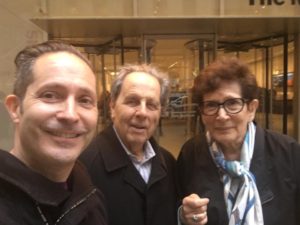
The page has also provided an opportunity to connect with pianists whom I hadn’t previously had personal contact with: Michel Dalberto, whom I remember from my early years of listening to recordings, commented on some of my Facebook posts; Kirill Gerstein met up with me when passing through town, having seen my posts for some time; and I recently received an email from Sergio Tiempo thanking me for what I articulated in my recent article on interpretation. Even more of a surprise was meeting the brilliant young pianist Andrew Tyson in Vancouver a few months ago: I spoke with him after his post-recital Q&A session (during which he had professed his love of Cortot, something that was obvious in his playing), and when I introduced myself, he said, “Wait, are you Mark from The Piano Files? I’ve followed your page for years.”
So when people complain about Facebook and how it is ruining communication, culture, and society, I most certainly beg to differ! Like anything in life, how you use something is as important as what it is that you are using.
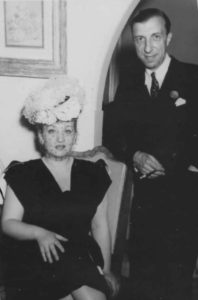
A lot happened over the year quite independently of the Piano Files page due to my previous work in the field of historical recordings. After some thirty years of researching Dinu Lipatti recordings, which led to the first publication of a number of rare items between 1995 and last year, I was invited to give presentations in his home country of Romania for the first time, and that was most certainly a dream come true. Additionally, a contact I’d met years back in London connected me with Benjamin Grosvenor, whom I consider to a pianist who plays in the great Romantic tradition, which led to numerous interviews and being able to attend a number of events (including one in London at which I met his teacher). I’ve also had a chance to present again on James Irsay’s radio program decades after my first 1992 appearance (some can be heard on my HearThis page – thought it must be said that most of our communication takes place via Facebook (again, those who think it’s ruining communication…).
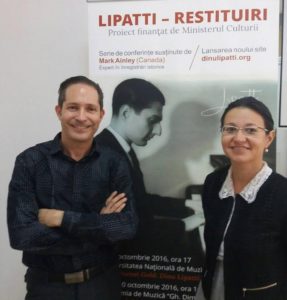
Due to my commitment to post daily on the page (except when offline on retreat or on major holidays – I even posted when in the hospital a few years back), I have had to expand my own knowledge of pianists and as a result have discovered some marvellous pianists I had never heard of before. Thanks to the efforts of YouTube uploaders and other fans of great piano playing, I have in the last decade come across some great performers for the first time: Sidney Foster, Jakob Gimpel, Aline van Barentzen, Franz Josef Hirt, Ozan Marsh, Hans Henkemans, Maryla Jonas, Albert Ferber, Agnelle Bundervoët, Jacqueline Eymar, William Murdoch, and several others are pianists whose playing I first encountered while searching for recordings to post on my Facebook page.
I have in the last decade also developed the website you are currently reading in order to add some longer articles and create an online resource: it has recently received a significant upgrade thanks to sponsorship on my Patreon subscriber page, and once the funds are raised, my Dinu Lipatti website will be getting a similar makeover. And I have also been adding to my YouTube channel, where I’ve uploaded a number of videos of rare recordings or fine transfers of 78rpm discs: several of the latter have been provided by Tom Jardine (who happens to be friends with Ward Marston), who has generously allowed me to share the beautiful transfer work he does as a hobby. And I have for the last year or so been posting on the HearThis site my own audio programs, the production of which is supported by subscriptions at my Patreon page.
And so for this anniversary, I want to acknowledge and thank all of the enthusiastic participants who have read, listened, clicked, and shared; those who have invited their friends to join (some have added hundreds to the page over the years); and those who have contributed via Patreon. Some of the first 100 members are still very active participants on the Facebook page. I’ve learned so much from the comments of many members over the years, and I have been delighted to see people from all over the world, of all ages, and from all walks of life come together to appreciate some inspired music making. Long may we continue, as Jascha Spivakovsky said, ‘to seek what they sought.’
And so, as a celebration of ten years of The Piano Files on Facebook, ten uploads:
1. First, my latest podcast episode, which features the playing of 7 ‘unsung pianists’, artists who are worthy of more recognition than they generally receive(d). Ever since I came across Joseph Villa’s artistry in 1991 (I have two episodes devoted to him on my HearThis page), I have been interested in pianists who for some reason never had the recognition their artistry warranted. In this series of podcasts, I will present great performances by such pianists. In this first episode, I feature seven remarkable artists, most of whose playing I first encountered while running my Piano Files page on Facebook.
2. The pianist Marian Filar is one I first heard of via a longtime subscriber to my page who studied with him, pianist Beth Levin. I only recently heard an early LP of Filar and was absolutely blown away. Levin’s colleague Charles Birnbaum studied with the Polish pianist as well and recently sent me a number of recordings, including this transfer of another early LP (ca.1950) featuring Chopin Nocturnes, as well as the lovely photograph reproduced in this video I made. In these exquisitely beautiful performances, Filar plays with remarkably clear textures, an incredibly pure singing tone, a soaring melodic line phrased with extraordinary suppleness, and a steady rhythmic pulse fused with natural timing. With Levin’s and Birnbaum’s assistance, I will be preparing a tribute article and further uploads of this marvellous artist, and offering a giveaway contest of a CD of the pianist.
3. A performer I don’t recall coming across prior to my operating my Facebook page was Jakob Gimpel, a wonderful Polish pianist who somehow never fully got his due despite having made several records for the high-profile Electrola label in the 1950s and playing the piano part in the Academy Award-winning Tom & Jerry cartoon Johann Mouse. I’ve featured this great pianist several times on my page, in both earlier and later concert recordings. This unpublished 1970 concert recording of Chopin’s Nocturne in E Major Op.62 No.2 was shared with me by the pianist’s son and is made available here for the first time (check my YouTube channel for other Gimpel performances, including two more from this recital). In this reading, we hear Gimpel’s beautifully forged singing line, mindful pedalling that never obscures the texture or line, and incredible nuancing: notice his timing at transitional points between phrasing and how he adjusts dynamic levels as well… and if you listen closely you can also hear Gimpel humming along a bit with the performance.
4. Natan Brand was a pianist I first encountered thanks to Bryan Crimp, founder of the APR label that produced the first memorial set devoted to this pianist back in 1991. A second set would later be produced on the Palexa label by a Montreal-based friend whom I’d known back in the late 80s and early 90s when we were both young piano fans (Jean-Pascal Hamelin, now an esteemed conductor). When in New York in 2014 to film my episode of Living The Classical Life, I called up Brand’s widow and she enthusiastically invited me to visit her and generously shared a number of precious recordings and videos with me (some uploaded in this post I produced about Brand). The performance below of Chopin’s Ballade No.1 in G Minor Op.23 has never been shared before and is especially moving because it comes from the pianist’s final recital, given in Amherst on July 16, 1990. This impassioned reading is filled with creative voicing, soaring phrasing, and Brand’s full-bodied singing sonority – a remarkable performance!
5. André Tchaikowsky was a true original of the keyboard who also left us far too soon, dying of cancer at the age of 46 (the same age as Brand). His commercial recordings are far too few for a pianist of his incredible capabilities and fortunately a remarkably comprehensive memorial website has been set up which features incredible documentation and concert performances. The Bach Concerto in D Minor BWV 1052 performance below hails from a July 24, 1973 London concert and finds the pianist playing with his usual rhythmic buoyancy, crystal-clear tone, and creative nuancing.
6. The last few years I have been mesmerized by the playing of Jascha Spivakovsky, whose playing was completely unknown to even the most ardent collectors because he never produced a solo recording, unlike his famous violinist brother Tossy. When his family began releasing private and broadcast recordings on the Pristine Classical label in 2015, my colleague James Irsay in New York (on whose radio program I very nervously first appeared in 1992) wrote to me raving about the playing and I immediately knew there was remarkable pianism of great historical interest here. I have since visited the family in Australia – this tour of his music room gives great insight into his story – and I have since been writing the notes for all of the Pristine releases, in addition to publishing an overview of the pianist’s life and art in Clavier Companion magazine.
Schumann’s now-seldom-played Piano Sonata No.3 played a key role in Spivakovsky’s life: this work was the ‘quick study piece’ that he had to prepare without the aid of a teacher for the 1910 Blüthner Prize (which he won at the age of 13 – the final-round judges were Busoni, Gabrilowitsch, and Godowsky) and he programmed it throughout his entire career. This 1963 broadcast recording from over half a century after his competition win is overflowing with passion, featuring soaring phrasing and deeply forged baselines, while discreet pedalling and the skillful use of finger legato serve to burnish melodic lines.
7. A pianist whose playing I still don’t know particularly well but have been enjoying in the last year or so is the obscure German pianist Erik Then-Bergh. APR has released his complete Electrola and Deutsche Grammophon recordings, and an Eloquence CD transfer of his Reger Telemann Variations has absolutely mesmerized me. This 1955 concert broadcast of Beethoven’s Fourth Concerto captures the German pianist’s playing at its most robust, with a blend of earthy vivacity and reverential refinement that suits Beethoven’s masterpiece perfectly.
8. The Australian pianist William Murdoch is one who escaped my notice for a long time – I’ve never seen an LP devoted to him, and I have only one CD of his playing that I’ve come across (collectors can look forward to something more comprehensive very soon, I’m happy to report) – but his playing is absolutely magnificent, revealing a strong character and mindful musician. The clip below features Murdoch’s 1932 Decca recording (K.682) of two Waltzes by Chopin, the Waltz in G-Flat Major Op.70 No.1 and the Waltz in D-Flat Major Op.64 No.1 (the “Minute Waltz”). These two works are despatched with tremendous rhythmic vitality, sparkling tone, beautifully defined articulation, and attentive voicing. Marvellous playing by a sadly overlooked figure in pianism.
9. One of the amazing things about historical recordings is that you get to hear the playing of artists from a complete different generation. Francis Planté was born in 1839 and actually heard Chopin play, and he played chamber music with performers who had performed with the composer himself. His only recordings were made on two days – July 3 & 4, 1928 – on his Érard piano at his home in Mont-de-Marsan. Planté and Vladimir de Pachmann are the only two pianists born during Chopin’s lifetime to have made electrical (aka microphone-amplified) recordings. Aged nearly 90 at the time these discs were produced, Planté was obviously not at his most dextrous in these performances, and yet there is much to appreciate in his playing: a robust sonority, attentive balance of left and right hands, natural timing (his rubato could in no way be considered extreme), and beautiful tonal colours. We owe Tom Jardine a debt of gratitude for providing this exceptional transfer from his own copy of the disc.
10. One of the first recordings that I read about as a student exploring early discs – and therefore a fine one with which to end this anniversary post, with an exceptionally fine transfer superior to all that I’ve heard – was Josef Lhévinne‘s magnificent reading of the Schulz-Evler Arabesken über ‘An der schönen blauen Donau’ von Johann Strauss, aka The Blue Danube Waltz. Lhévinne’s recording has been so universally praised and played that many were and still are unaware that he played a rather truncated version of the Schulz-Evler transcription in order to fit the work onto the two sides of the 12-inch RCA 78rpm discs. This popular record was the Russian pianist’s first disc for RCA, set down on May 21, 1928, yet Lhévinne would not produce another recording until 1935, and his total studio discography totals about an hour. This glorious reading features the artist’s remarkably polished sonority, taut rhythmic bounce and pulse, sumptuous phrasing, and incredibly refined nuancing – a performance that continues to delight listeners 90 years after it was made. Many thanks to Tom Jardine for providing his fantastic transfer of the performance from an original 78rpm disc for use in this upload.
I hope that you have enjoyed these postings. We are truly living at an amazing time, when great historical recordings are more accessible than ever before (I’ll be posting next week about an incredible first-time-on-vinyl historical recording by one of my all-time favourite artists – one about whom I’ve written a lot … stay tuned)! I am grateful that my Facebook page has been such a wonderful hub for likeminded piano fans to gather and enjoy glorious piano playing, and I hope it will continue to be for many years to come.
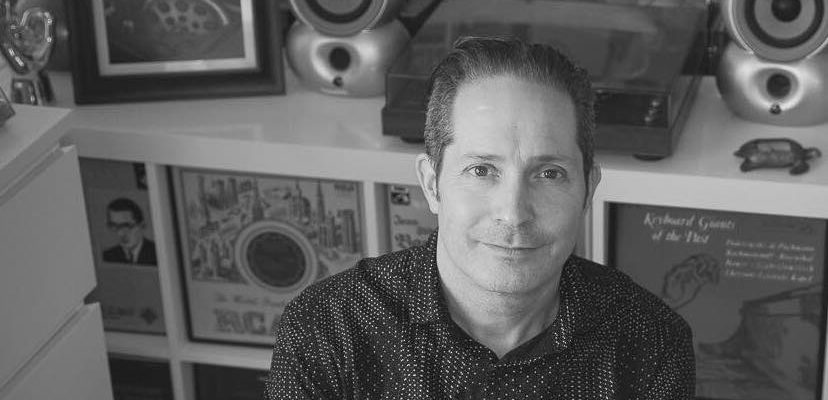
Comments: 2
Thanks for all you do for this merry band of pianophiles and congratulations on your 10th anniversary. For all its faults, fb has indeed helped spread some good and indeed the Internet in general has made so much available to the wider world. I can’t believe the music I have seen and composers and performers I have heard that would have been impossible when I was younger.
More specifically I am hoping that the hour of music that the magnificent Lhevinne recorded will be expanded before too much longer by the efforts of a certain historic label. My breath is certainly bated…
Vous nous avez donné de véritables trésors à entendre. Je me suis vraiment régalée ! Merci de tout le travail que vous faites pour ce site. C’est vraiment merveilleux.